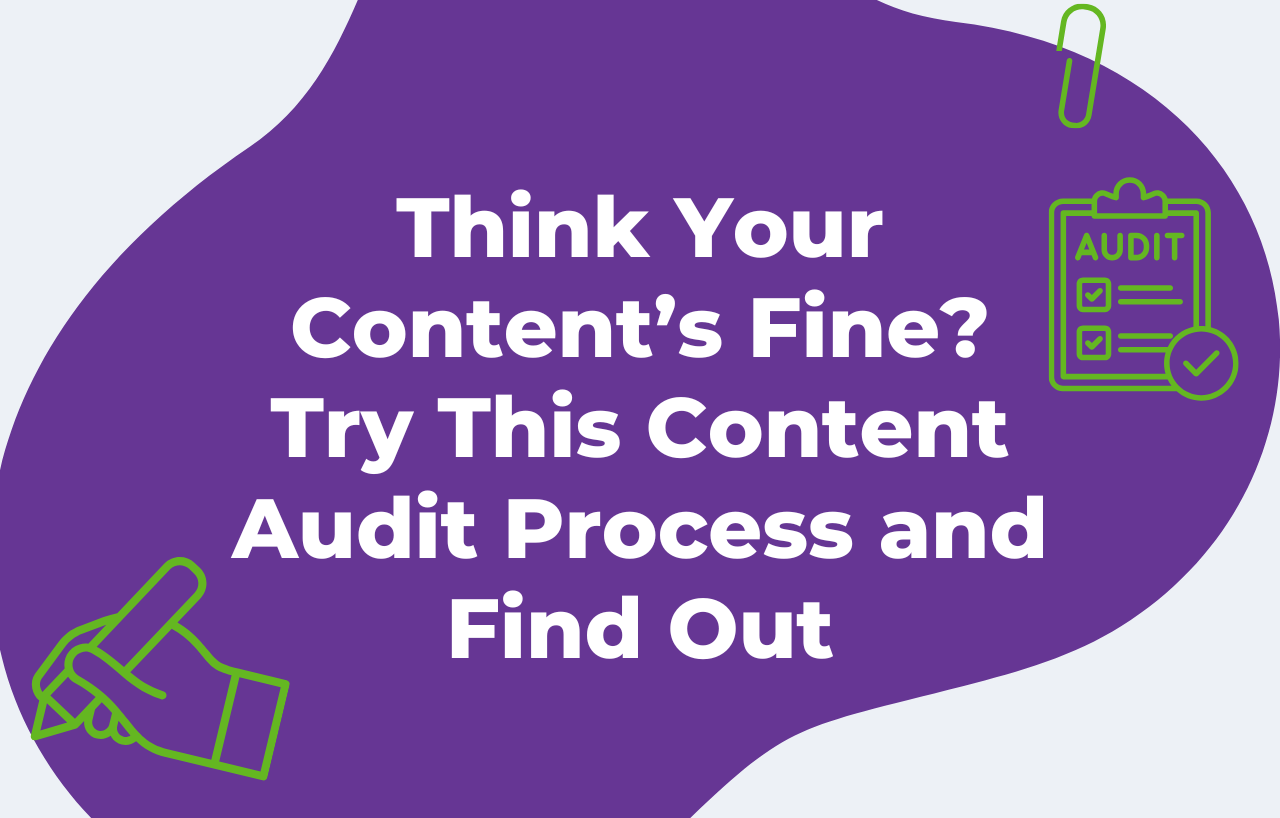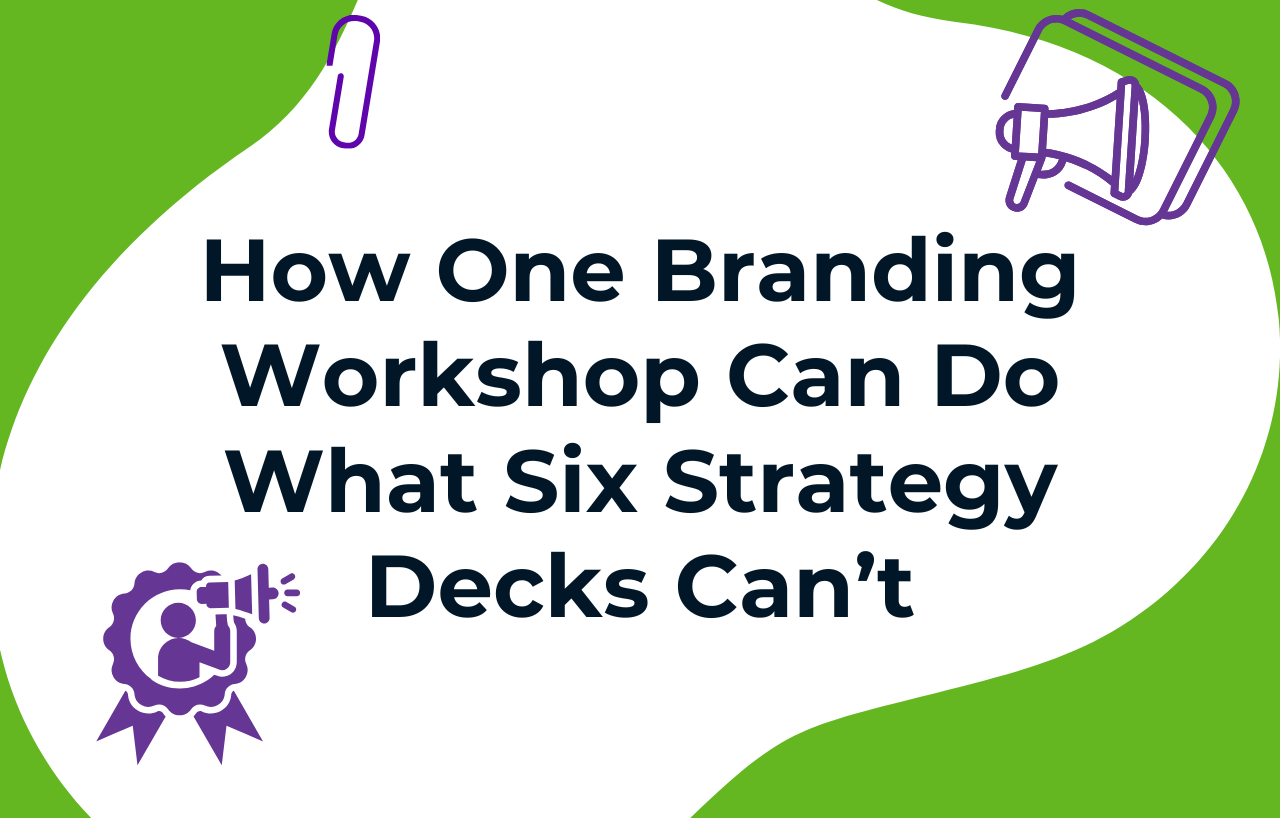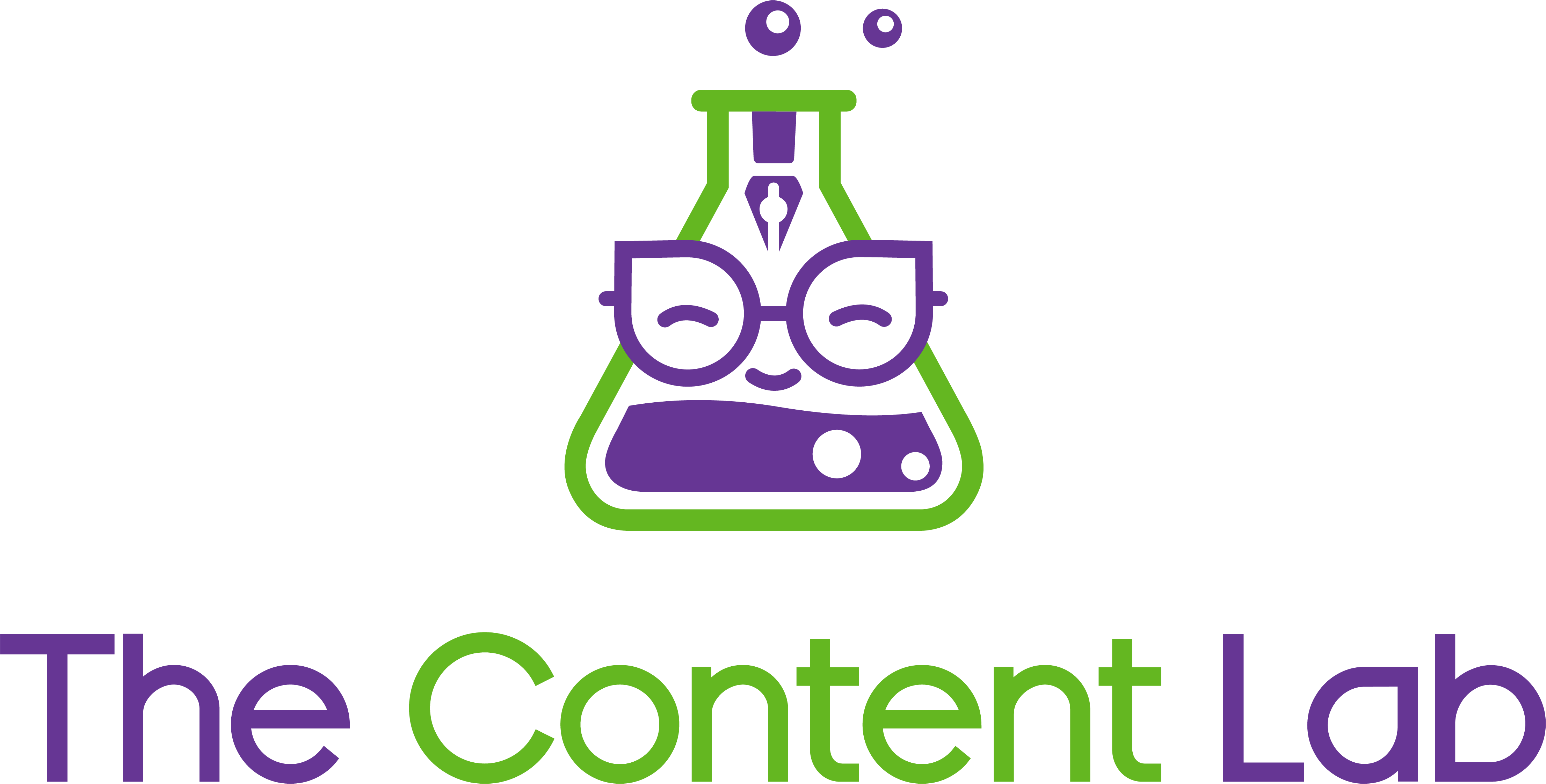There’s no greater feeling than when you’re on a roll with your content writing.
You’re ploughing through the text, feeling like the Shakespeare of the digital age…until you arrive at writing the CTA section and fall flat at the last hurdle.
If that sounds like you, don’t beat yourself up. This one little bit of text can be difficult to get right. Even the most professional content writers sometimes struggle to find impactful, punchy, and persuasive ways to encourage action and boost conversions.
Here’s the good news, though. With the right tools and knowledge, writing CTAs that turn web traffic into real results gets a whole lot easier!
What makes a great call-to-action?
A call-to-action is a powerful piece of content. It’s all about guiding your reader along the buyer’s journey to complete your desired action, converting visitors into leads, and ultimately into customers.
Whether you want your audience to make a purchase, download a resource, or subscribe to your email list, crafting the perfect call to action can take a little practice to get right.
So, what separates the ‘meh’ CTAs from the irresistible ones?
A great CTA is direct, yet gentle. Persuasive, yet conversational. Small, yet mighty.
Essentially, a call-to-action speaks directly to your reader, telling them why they should act now, and directing them to take the desired step – all without being pushy or dishonest.
That’s easier said than done, though, right?
Don’t worry, we’ve got you! Here are our top tips to help you start writing super compelling CTAs and get your website visitors clicking those CTA buttons in no time!
How to write a good call-to-action
1. Tap into your target audience
By now, you’re well aware just how important it is to factor your audience into every element of your content. But when it comes to CTAs, it’s worth reiterating.
If your reader doesn’t connect with the information presented to them on a personal, emotional level, they’re not going to convert. Simple as.
Think about the kind of content your audience wants to consume. They want engaging, interesting content that really speaks to them. You already craft the body of your text with this in mind; your CTA text should follow suit.
Ask yourself what would be the best way to communicate with your potential customers in those vital moments. Put yourself in their shoes and consider the kind of message that would catch your eye and elicit a click-worthy emotional response.
Remember, readers respond to different tones in different ways. Getting a little edgy might be very effective in creating compelling messaging for certain audiences, but that same approach might alienate others. Make sure you understand what will resonate best with your audience and motivate the desired response.
When in doubt, keep it simple. Sometimes, it’s the best way to say what you need to say.

2. Use language that inspires action
It’s all in the name! You’re literally trying to call people into action, so you’ve got to use language that motivates, encourages, and inspires readers to take the leap and act.
But how?
There are a couple of tactics you can use to create the kind of response you want from your audience.
Firstly, infuse your messaging with clear, strong verbs (action words) that leave no room for confusion or uncertainty. Take a look at these examples:
- Encourage subscriptions: Subscribe, join, sign up
- Make a sale: Shop, buy, purchase
- Learn more: Explore, discover, read
Whatever your goal is, don’t beat around the bush. Instead, get straight to the point with words and phrases that tell your audience exactly what they should do. The clearer and more direct, the better.

Next, always use the active voice instead of the passive voice when writing CTAs.
But what exactly is the difference between the two? Well, it all comes down to the structure of the sentence. While that might not sound super important, it makes a world of difference in terms of impact!
Let’s break each voice down.
In the active voice, the subject performs the action.
Example: This CTA (subject) converts (action) customers (object).
But in the passive voice, the focus of the sentence is on the object of the action.
Example: Customers (object) will be converted (action) by this CTA (subject).
A little less evocative, right?
When you speak in the active voice, you speak clearly and with conviction – an approach that’s far more likely to inspire the kind of action you’re hoping to achieve!
3. Create a sense of urgency and exclusivity
Remember that shop in your home town that seemed to have a closing-down sale on for what seemed like forever?
Well, they were probably taking the ‘sense of urgency’ marketing tactic a little too far. But they had the right idea!
Limited time, limited stock, temporary discount for the first hundred people to sign up… When it comes to carrying out your CTA, creating a sense of urgency makes your readers feel like it’s now or never – and it really should be now!
Creating a sense of exclusivity around your brand and your offerings is another effective way to get people interested and motivate them to act fast. After all, we humans are pack animals at our core. We like to be included, and we’re willing to go to great lengths to avoid missing out.
There are certain words and phrases that elicit an emotional response in your reader, helping create those feelings of urgency and a sense of exclusivity in your call-to-action.
Take, for example:
- Join now
- Limited offer
- While supplies last
These terms suggest that there’s a limit or expiration date on your offer, compelling them to convert quickly. And in an almost impossibly competitive online market, speed is key. You’ve got to pip your competitors at the post if you want to convert your target audience into loyal customers.

4. Focus on the benefits
Naturally, when you’re writing your CTAs, you might be tempted to focus on the many wonderful features your products or services have to offer. But, the reality is, by taking this approach, you’re more likely to lose your audience – at the moment it matters most.
This might sound a little harsh, but your audience – just like everyone – is always looking out for themselves first. After all, they’ve got problems to solve, progress to make, goals to achieve! It’s nothing nasty, it’s just how we operate.
So, put yourself in their shoes. What value does your business add to their lives? What do they have to gain by completing your desired action? Why should they give you their business and not your competitors?
They want to know what’s in it for them. And it’s your job to tell them, and to make choosing your products or services a no-brainer.

This is where your unique value proposition comes into play.
But what exactly is a value proposition, and how does it relate to writing effective calls to action?
In its essence, a value proposition is a succinct message that tells your audience how your offerings directly benefit their lives. Think of it as your marketing secret weapon: one of the most effective tools you have to get your audience to convert. It should be clear, targeted, to the point, and super engaging.
So, before you sit down to write CTAs for your website, social media posts, or any other marketing materials, make sure you’re crystal clear on what your unique value proposition is and how to communicate it.
Think about the specific benefits your products or services can bring to your customers’ lives, and how your offerings are a direct solution to their problems. Then, work this into your CTA.
5. Keep things short and sweet
Listen, you don’t need (or want) to be reminded of the dwindling attention spans of audiences today. That said, it’s getting increasingly more difficult to maintain an audience’s attention long enough to keep them engaged, making it all the more tricky to convert website visitors into customers.
That’s why it’s absolutely key to make your CTAs super clear and to the point.
No one wants to trawl through endless amounts of detail to understand what you’re saying – especially in those crucial moments before committing to a purchase, subscribing, or downloading something!
Say what you need to say in the fewest possible words.
Keeping things clear and to the point is a much more effective way of grabbing and hanging onto your audience’s attention than rambling on for countless paragraphs trying to convince them of something.

Plus, it makes you seem more confident and self-assured, making it easier for potential customers to trust your expertise.
Remember, a call-to-action isn’t the place to show off your huge vocabulary. Instead, focus on simple, universal language that will connect with as many people as possible.
Avoid any industry-specific jargon that your reader might not understand. Not only does this keep your CTA clear, but it also creates a more inclusive online space – a big yay from us! Read this blog from the wonderful Riley to learn more about online inclusivity and content accessibility.
6. Make it look cute
Expertly-crafted copy aside, the impact of a CTA relies heavily on its visual appeal.
Design plays an incredibly important role in engaging an audience. Your written content does your call-to-action’s heavy lifting, connecting with your readers on an emotional level to persuade them to act. But, your message needs to be presented in an attractive, eye-catching way if you want people to read it in the first place.
Once again: less is more. Not only does keeping your CTA copy nice and concise help you get your point across, but it makes your call-to-action look super slick and professional.
Let’s break it down a little:
- CTA banner: This is where your clear, concise conversion copy goes. Keep it to 1-2 short sentences, max.
- CTA button: Stick to short, super-clear action words for your CTA button copy. Think “Join Now”, “Sign Up”, or simply “Purchase”.
- Secondary CTA: If you want to encourage an alternative or secondary desired action, make sure to clearly differentiate the two. Make the secondary CTA button a different colour or move it to another section of the page to avoid confusion.

When you’re writing any content – but especially a call-to-action – you should consider the layout and imagine how it’s going to look on the page. Whether you’re writing an email, website copy, or social media content, make sure your message packs a punch, makes a strong visual statement, and is clearly readable across all platforms.
The goal is to make it as easy (and tempting) as possible for potential customers to click through and take action. Visual appeal and clarity are key!
7. Personalise where possible
You might not be able to personalise every CTA across your entire online presence. But when you can – do! It’s a fantastic opportunity to highlight your brand personality, and connect and engage with your audience.
In fact, personalised CTAs get 202% more clicks than standard ones. That’s a huge uptick in engagement!
But how exactly do you personalise a call-to-action? Let’s use email marketing as an example.
Email marketing is a brilliant way to engage directly with your audience. It’s a chance to connect with them on a deeper level through personalised, tailored content that arrives in their inbox precisely when they need it.
When you’re creating an email campaign, use data analytics to segment your audience to ensure you’re only sending emails that are interesting and relevant to the recipient. That’s already a step toward personalisation!
You can also use these insights to help you write mindfully-targeted email copy, including more personal calls-to-action!
Whether you want to encourage them to dip back into content they’ve previously engaged with, remind them of something they’ve checked out before, or re-engage with a customer who’s gone silent – craft your CTA accordingly.
No one likes a spam email. But your audience will always be happy to open something – and complete a CTA – that feels intentional, personal, and offers them genuine value.

8. Don’t be afraid to rethink your CTA
As with everything else in your digital marketing strategy, you should always be willing to adapt your approach to get the best results.
From online trends and marketing best practices to your customers’ wants and needs – change is natural and inevitable. And these days, it’s quick, too. Blink, and you’ll miss the latest!
It makes sense, then, that your calls-to-action will also need to change along with the times.
How do you know when it’s time to shake things up? Put your CTAs to the test. See what’s performing well, what’s landing you conversions, and what connects best with your target audience. By analysing the performance of your CTAs, you get invaluable insights into what kind of content drives the best results.
This way, you can tailor your CTAs to your customers’ needs, while weeding out what doesn’t resonate with them. They get what they need, you get more conversions than ever before. It’s a win-win!
And don’t forget to experiment with different keywords in your call-to-action copy. These little pieces of content are great places to weave additional keywords into your website content in a way that feels natural to the reader and helps you rank higher on search engines.
Awesome CTA examples to inspire you
Whatever kind of marketing materials you’re writing calls-to-action for – web pages, social media posts, landing page copy, email campaigns, or otherwise – it’s a good idea to explore what’s already out there. This is a great way to see what’s working for others and get your own creative juices flowing.
Here are some wonderful call-to-action examples we’ve written for our previous clients that we absolutely love – and we think you’ll love, too.
1. Revel Sex Coaching
First up is a CTA we wrote for Revel Sex Coaching.
For this CTA, the desired action was to get website visitors to download Mark’s free guide that aims to help people bring their sex lives back from the dead.
Thanks to his quirky brand personality, we were able to make quite an impression with his CTA banner content. It catches your eye and gets to the point, delivering a self-assured and interesting value proposition.
Where most people would have written a simple “Download Now” or “Free Download” on the CTA button, we went for something a little more personality-fuelled and provocative.

2. Dickens Yard Dental
Typically, when writing for a dental clinic, you don’t have much room to let your inner creative writing nerd roam free. But on this particular project, we definitely did!
Humour can be a great way to get audiences to convert. It shows people how approachable and down-to-earth your brand is. So, if you fit the bill, why not lean into it?
In this case, the CTA buttons are kept much more conventional for the sake of clarity, but we had some fun with the banner copy!
Who says you can’t infuse a healthy dose of personality while still being clear and professional?

3. RED Global
RED Global is an industry leader in recruitment, so their CTAs needed to be bold and confident.
Short, snappy sentences are incredibly impactful in cases like these, exuding expertise.
We used questions in the CTA heading and button copy to add intrigue and engage the audience directly. For example, instead of saying “Explore talent recruitment”, we’ve opted for “Looking for talent?” and “Looking for work?” to make it clear who we were speaking to, and where we were guiding them next.

Craft the perfect CTA for your website, blog post, or landing page with The Content Lab
Writing CTA copy that attracts, engages, and converts your target audience can be tricky to get right.
Why not leave it up to the content writing professionals instead? Reach out, and let’s talk content!
Other Posts
 Content Marketing
Content Marketing Think Your Content’s Fine? Try This Content Audit Process and Find Out
 Content Marketing
Content Marketing How One Branding Workshop Can Do What Six Strategy Decks Can’t
 Content Marketing
Content Marketing 

